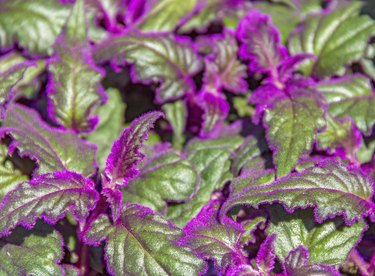
"Purple Passion" might sound like the name of a Prince tribute band, but it's actually a very popular houseplant (Gynura aurantiaca). Its green leaves are covered in delicate purple hairs, giving it a velvety purple appearance (and its other common names, "velvet plant" or "purple velvet plant"). As houseplants go, Purple Passion is fairly low maintenance, but it is susceptible to infestation by a variety of insects. As long as you catch them relatively early, most infestations won't seriously threaten your plant.
Purple Passion Plant Basics
Video of the Day
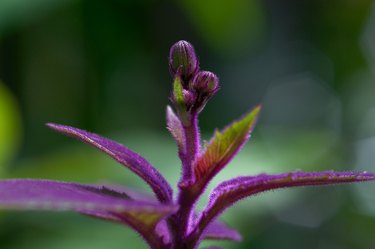
Purple Passion is an evergreen vine that's native to Indonesia. A well-grown plant can reach a height of 1-2 feet and a spread of 3-4 feet. It's equally at home in a planter on a stand or in a hanging basket. You'll want to give it a spot with plenty of indirect light—you won't get the signature purple leaves in direct sunlight—without cold drafts and ideally, with some humidity (it is, after all, a tropical plant). Placing it in or just outside a kitchen or bath can provide humidity effortlessly, but you might need a humidifier in dry climates.
Video of the Day
Choose a well-draining potting mix, as potting soils designed for water retention will often lead to root rot. Pruning stems periodically will help promote a bushy growth habit, and since stem cuttings are the preferred method of propagation, it provides an opportunity to create new plants. The Purple Passion plant does produce clusters of vivid red, yellow or orange flowers in winter, but they're usually removed, partly because they're messy and partly because they smell quite unpleasant.
Common Purple Passion Plant Pests
Purple Passion vine doesn't have any specific insect threats that it's especially known for. If you have bugs on your plants, it's likely to be one of the usual handful that generally affect houseplants throughout the growing season. Here are a few potential culprits.
1. Spider mites
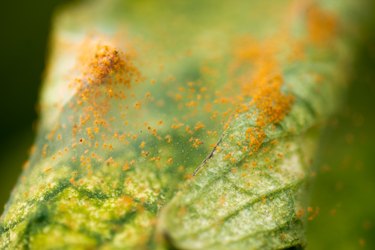
Spider mites are tough to spot because they're very tiny; you'll barely see them with the naked eye. They take up residence on the underside of leaves, where they feed on the plant's juices. If your plant's leaves turn bronze or show brown flecks, turn them over and look closely at the underside. You might be able to see mites with a magnifying glass, or you might see spiderlike webbing.
Remove any damaged leaves from your plant and dispose of them. Then, hose off the plant in the sink or shower to remove pests. Repeat this treatment until signs of infestation are gone. Spider mites like hot and dry conditions, which is a second reason to provide the humidity your Purple Passion plant prefers.
2. Aphids
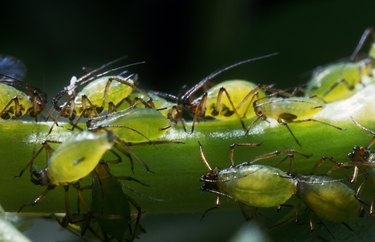
Aphids are soft-bodied insects, usually pale green, that gather along the plant's stems and on new growth. They suck the sap of the plant, and a heavy infestation will cause it to wilt or leaves to curl. Unlike spider mites, aphids are easily visible to the naked eye, but you might first notice their sticky, honeylike excrement on your plant. This is known as honeydew, which can lead to black mold or other secondary infections. Aphids can also be hosed from your plant, and for heavy infestations, you can use an insecticidal soap and water or neem oil. Pyrethroid insecticides also help control these pests.
3. Mealybugs
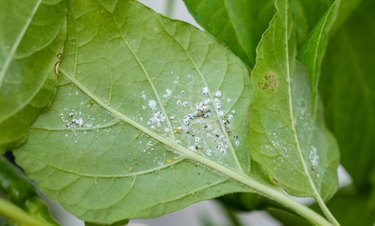
If your Purple Passion plant is infested with mealybugs, you'll start to notice a cottony substance, usually where the joints meet the stems, though some species prefer the underside of leaves. It's produced by the female mealybug and used to hide her eggs. Like aphids, mealybugs produce sweet honeydew that can attract other pests or lead to secondary infections.
You can kill adult mealybugs individually by dipping a cotton swab in alcohol and holding it against their back for a few moments. For a full-bore infestation, an insecticidal soap will work to control mealybugs in quantity. If mealybugs invade your plant's roots, aystemic insecticides that contain disulfoton and imidacloprid will quell them.
4. Whiteflies
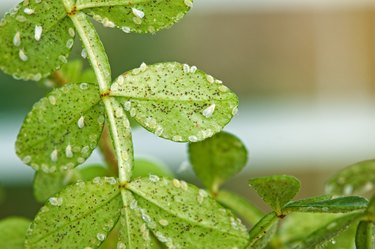
One of the most common plant pests, whiteflies also suck the plant's sap and excrete honeydew. Both whitefly adults and nymphs feed on sap, but nymphs are the heaviest feeders and the biggest threat to your plant. Whitefly nymphs appear as small white specks on the underside of the plant's foliage, where they'll feed for about four weeks before pupating into adults. Use insecticide that contains sumithrin, pyrethrins, tetramethrin or resmethrin to kill these pests.
5. Scale insects
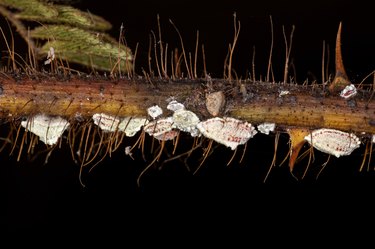
If your Purple Passion plant suddenly begins to look like it's growing barnacles, you have an infestation of scale insects. These insects produce a waxy protective coating that covers their body, making them look like a white or tan scale on the plant's stems. The insects suck sap and produce honeydew, weakening the plant and causing foliage to die back. Apply insecticides that contain pyrethrins and resmethrin once per week to control scales. Insecticides that contain bifenthrin and permethrin offer longer periods of control, though a systemic insecticide will also eliminate the pests.
Tip
Purple Passion isn’t solely an indoor plant if you happen to live in an area with a climate resembling that of its native Java. In the U.S., that means USDA plant hardiness zones 10 and 11. Choose a spot with well-draining soil and indirect sunlight for the best coloration. In dry climates, situating your plant near a water feature will help give it the humidity it needs.
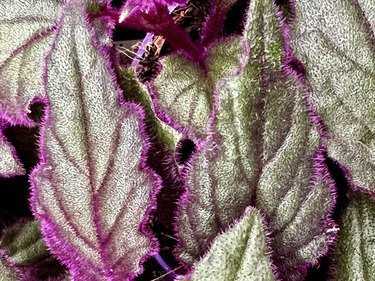
Above all, keep your Purple Passion healthy with standard care. Plants will generally be more resistant to insect damage and protected from disease if you avoid overwatering and make sure to provide adequate air circulation and humidity.
Here's to a pest-free future for your beloved blooms!